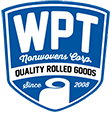
Convenient and cost-effective, bicomponent nonwovens continue to grow in popularity as the versatile choice for a diverse range of products.
Nonwovens manufacturers have been able to use a variety of treatment options and materials to impart desired characteristics for a given product application. Nonwoven materials are developed for strength, stretch, and softness. Functional characteristics can include absorbency, resistance to liquids, flame retardancy, cushioning, filtering, bacterial barriers, and sterility.
Bicomponent nonwovens take this capability to the next level by offering more advantages. They can be from the same or entirely different polymer fiber types. Each type might possess unique physical or chemical properties. Bicomponent fiber can be developed with specific characteristics that can be applied in a particular application.
Bicomponent Fiber Advantages
- 100% fiber
- Thermal bonding
- Self-bulking
- Extremely fine fibers
- Distinctive cross sections
- Characteristics of special polymers or additives at reduced cost
- Uniform distribution of adhesive
- Fiber remains a part of structure and adds integrity
- Customized sheath materials to bond various materials
- Wide range of bonding temperatures
- Cleaner, environmentally friendly, recyclable
Bicomponent Nonwovens Applications
- Infant Diapers
- Training Pants
- Incontinence Products
- Feminine Hygiene Products
- Hospital Underpads
- Wound Care and Absorbent Bandages
- Diabetic Absorbent Wound Dressings
As a U.S. producer of bicomponent nonwovens, WPT Nonwovens has developed an eBook to offer information on this innovative nonwoven option. This publication titled, Bicomponent Nonwovens – The 100% Fiber Choice is available now for free.
Many manufacturers are realizing the advantages of bicomponent fiber nonwovens. Download our FREE eBook to find out if bicomponent nonwovens are right for your project.

